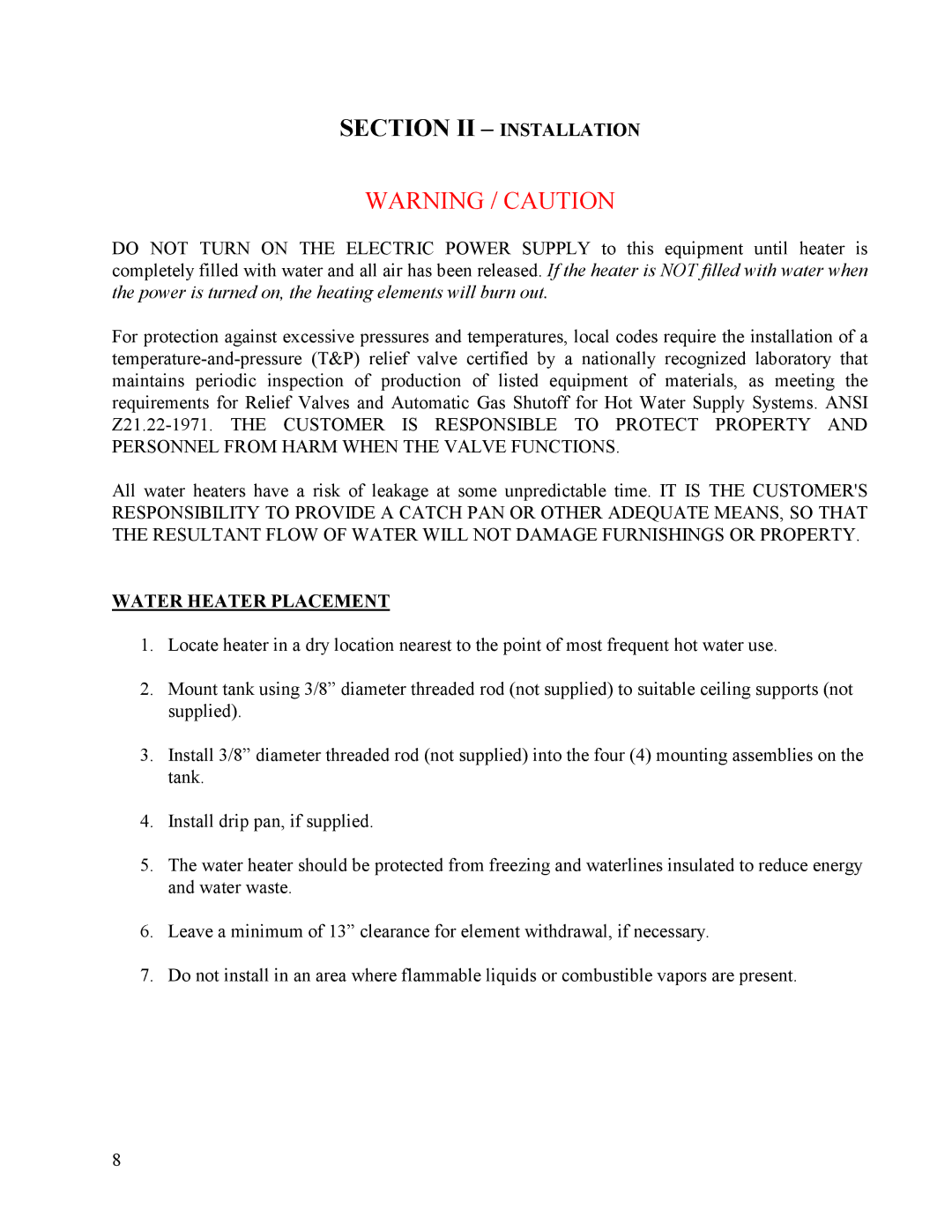SECTION II – INSTALLATION
WARNING / CAUTION
DO NOT TURN ON THE ELECTRIC POWER SUPPLY to this equipment until heater is completely filled with water and all air has been released. If the heater is NOT filled with water when the power is turned on, the heating elements will burn out.
For protection against excessive pressures and temperatures, local codes require the installation of a
All water heaters have a risk of leakage at some unpredictable time. IT IS THE CUSTOMER'S RESPONSIBILITY TO PROVIDE A CATCH PAN OR OTHER ADEQUATE MEANS, SO THAT THE RESULTANT FLOW OF WATER WILL NOT DAMAGE FURNISHINGS OR PROPERTY.
WATER HEATER PLACEMENT
1.Locate heater in a dry location nearest to the point of most frequent hot water use.
2.Mount tank using 3/8” diameter threaded rod (not supplied) to suitable ceiling supports (not supplied).
3.Install 3/8” diameter threaded rod (not supplied) into the four (4) mounting assemblies on the tank.
4.Install drip pan, if supplied.
5.The water heater should be protected from freezing and waterlines insulated to reduce energy and water waste.
6.Leave a minimum of 13” clearance for element withdrawal, if necessary.
7.Do not install in an area where flammable liquids or combustible vapors are present.
8
